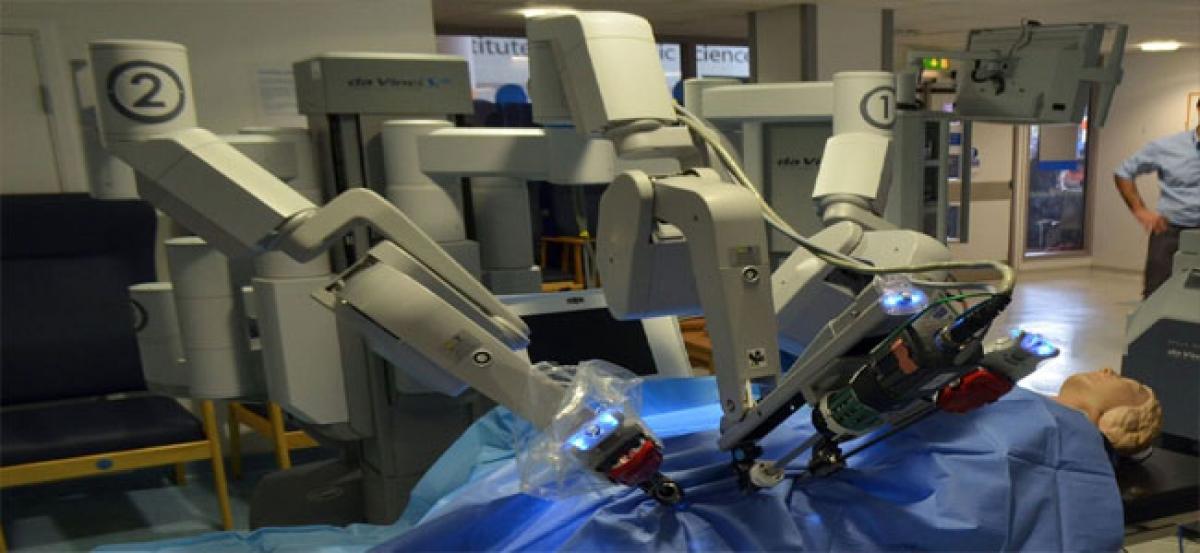Live
- Sajjala denounces Naidu’s ‘heinous politics’
- NDA parties release ‘charge sheet’ against Jagan
- Actor Nikhil Siddharth roots for TDP, takes part in campaign
- Hyderabad: Religious jingoism will not fill empty stomachs says K Chandrashekar Rao
- Hyderabad: BJP does not spare even Gods says Revanth Reddy
- Hyderabad: Will end 4% quota for Muslims in TS says Amit Shah
- Jagan failed to keep poll promises: Sharmila
- Beware of Jagan’s dramas, cautions Naidu
- Hyderabad: Ghose panel to quiz KCR
- Viveka Murder: Avinash innocent, asserts Jagan
Just In

Scientists have developed an implantable medical robot that can stimulate tissue growth in stunted organs without causing discomfort. The system induced cell proliferation and lengthened part of the oesophagus in a large animal by about 75 per cent, while the animal remained awake and mobile.
Boston: Scientists have developed an implantable medical robot that can stimulate tissue growth in stunted organs without causing discomfort. The system induced cell proliferation and lengthened part of the oesophagus in a large animal by about 75 per cent, while the animal remained awake and mobile.
According to the researchers from Boston Children's Hospital in the US, the system could treat long-gap oesophageal atresia, a rare birth defect in which part of the oesophagus is missing, and could also be used to lengthen the small intestine in short bowel syndrome.
The most effective current operation for long-gap esophageal atresia, called the Foker process, uses sutures anchored on the patient's back to gradually pull on the oesophagus.
To prevent the oesophagus from tearing, patients must be paralysed in a medically induced coma and placed on mechanical ventilation in the intensive care unit for one to four weeks. The long period of immobilisation can also cause medical complications such as bone fractures and blood clots.
"This project demonstrates proof-of-concept that miniature robots can induce organ growth inside a living being for repair or replacement, while avoiding the sedation and paralysis currently required for the most difficult cases of oesophageal atresia," said Russell Jennings, from the Boston Children's Hospital.
"The potential uses of such robots are yet to be fully explored, but they will certainly be applied to many organs in the near future," said Jennings, co-investigator on the study published in the journal Science Robotics. The motorised robotic device is attached only to the oesophagus, so would allow a patient to move freely. Covered by a smooth, biocompatible, waterproof "skin," it includes two attachment rings, placed around the oesophagus and sewn into place with sutures.

© 2024 Hyderabad Media House Limited/The Hans India. All rights reserved. Powered by hocalwire.com







